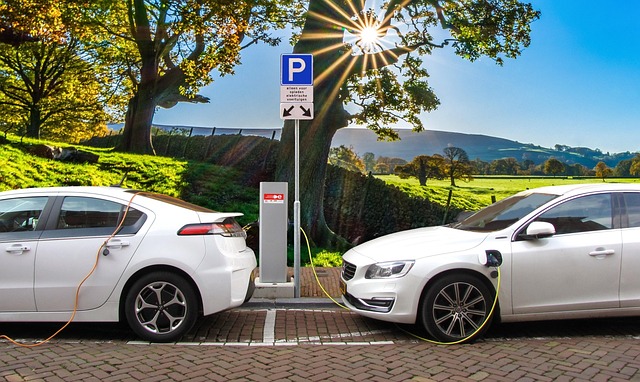Looking to register your car in California? This comprehensive guide walks you through the entire process, from understanding key requirements to completing the registration. First, grasp the essential car registration rules in California. Then, gather the mandatory documents for VIN (Vehicle Identification Number) verification. Next, perform a VIN check at a designated location or online. Once prepared, choose an optimal registration site and fill out the necessary forms. Follow these steps for a smooth car registration experience in The Golden State.
- Understand California Car Registration Requirements
- Gather Necessary Documents for VIN Verification
- Perform Vehicle Identification Number (VIN) Check
- Select a Suitable Auto Registration Location
- Complete the California Car Registration Process
Understand California Car Registration Requirements

Before registering your car in California, it’s essential to understand the state’s specific requirements. One crucial aspect is ensuring your vehicle has a valid and accurate Vehicle Identification Number (VIN) verification. This process confirms the authenticity of your car’s VIN, which is critical for legal registration. In California, you’ll need to provide a current, valid inspection certificate from a certified station or mobile VIN verifier to prove this information.
Additionally, expect to furnish essential documents like proof of insurance, a completed registration application, and the necessary fees. A mobile VIN verification service can be particularly convenient in this process by offering on-site inspections for added convenience and peace of mind. Keep these requirements in mind when preparing your car for registration to ensure a smooth transition.
Gather Necessary Documents for VIN Verification

Before you begin the car registration process in California, it’s crucial to gather all necessary documents for VIN (Vehicle Identification Number) verification. This includes your vehicle’s registration certificate from the previous state, proof of insurance, and a valid driver’s license or ID card. Additionally, you’ll need the title document if you own the car outright. For those who haven’t obtained their title yet, a Bill of Sale signed by the seller is acceptable.
Among these documents, the VIN verification process—often facilitated by a mobile vin verifier or conducted during a vin inspection—is a critical step. California’s Department of Motor Vehicles (DMV) will use your vehicle’s unique VIN to access its history, ensuring it meets all necessary safety and environmental standards. This digital check ensures that your car is legally clear to hit the roads within the state.
Perform Vehicle Identification Number (VIN) Check

Before registering your car in California, performing a Vehicle Identification Number (VIN) check is a crucial step. This process involves verifying the vehicle’s history and ensuring it meets all legal requirements. You can conduct a VIN verification through various methods, including online platforms or by contacting the California Department of Motor Vehicles (DMV). The latter option typically requires visiting a local DMV office or using their official website to access detailed records.
A mobile vin inspection service is also available in California, offering a convenient alternative for those who prefer not to visit a physical location. This service allows you to obtain real-time data and reports on your vehicle’s history directly from your smartphone or computer. By comparing the information gathered through these methods, you can ensure that your car meets all the necessary standards before proceeding with registration.
Select a Suitable Auto Registration Location

Choosing the right location to register your car is an essential step in the process. California offers several options, including DMV offices and third-party services like mobile VIN verifiers. If you prefer a more convenient approach, consider using a mobile VIN verifier for a quick and efficient vin inspection. These services allow you to complete the registration from the comfort of your home or even while you’re on the go.
DMV offices are traditional locations where you can register your vehicle. They provide comprehensive services, including issuing license plates and handling title transfers. However, they might have longer waiting times, especially during peak hours. Compare these options to determine what best suits your needs, whether it’s a straightforward process at the DMV or the added flexibility of a mobile VIN verification service.
Complete the California Car Registration Process

To complete the California car registration process, you’ll need to follow several steps and provide essential documentation. Start by gathering all necessary paperwork, including your vehicle’s Registration Application (Form DMV-123), proof of insurance, and a valid driver’s license or ID. Next, conduct a Vehicle Identification Number (VIN) verification, which is a crucial step in the process. This can be done through a mobile VIN verifier or at a DMV office, ensuring the vehicle’s identity and history are accurately checked.
After successful VIN inspection, visit a designated California DMV office to submit your application. Bring along all required documents, including any fees for registration and title transfer if applicable. Staff will review your information, perform additional checks, and process your registration. Once approved, you’ll be issued a new car registration certificate, valid for the specified period, ensuring your vehicle is legally registered and ready for road use in California.
Registering a car in California is a straightforward process once you understand the requirements and have all the necessary documents. After completing the VIN verification, selecting an appropriate registration location becomes easy. By following these steps outlined in the article—from understanding the rules to gathering paperwork and finally filling out the forms—you’ll be legally registered in no time, ensuring your vehicle is ready to hit the bustling California roads.
